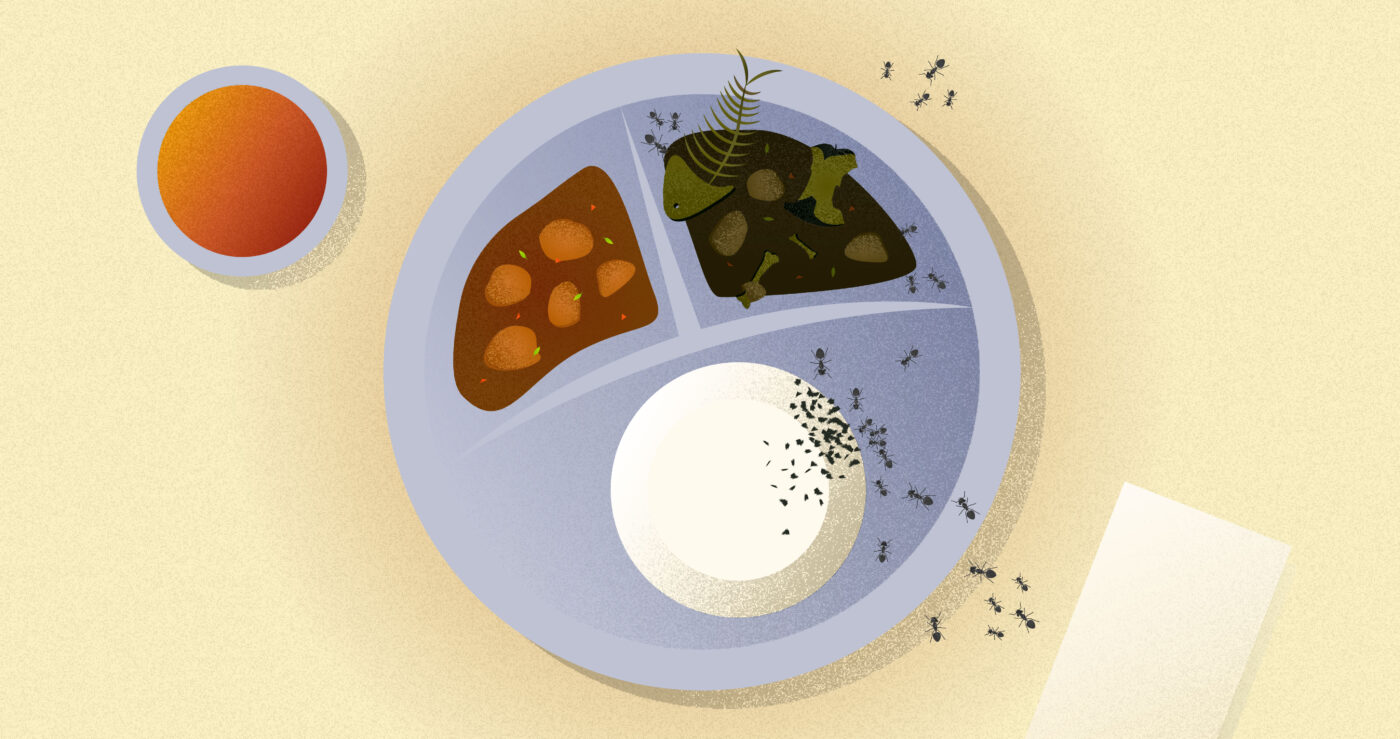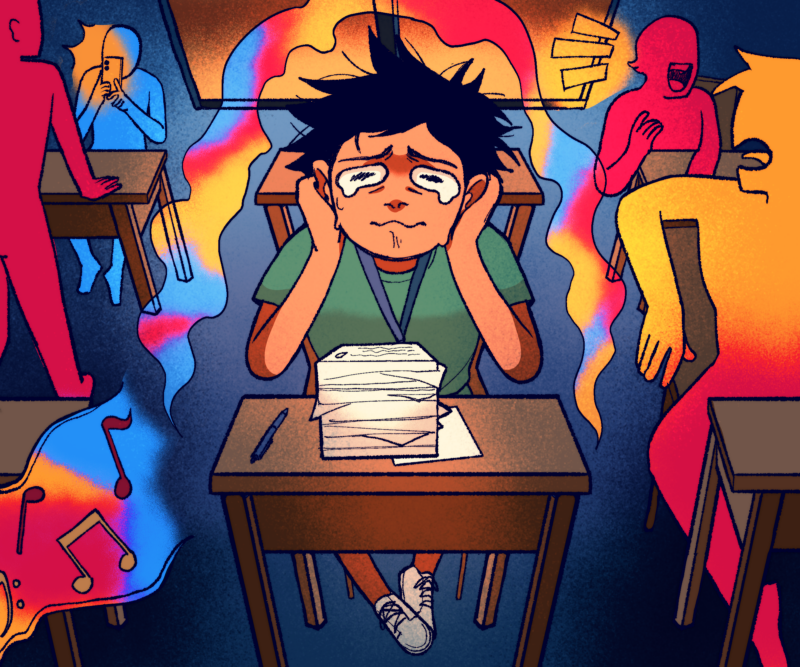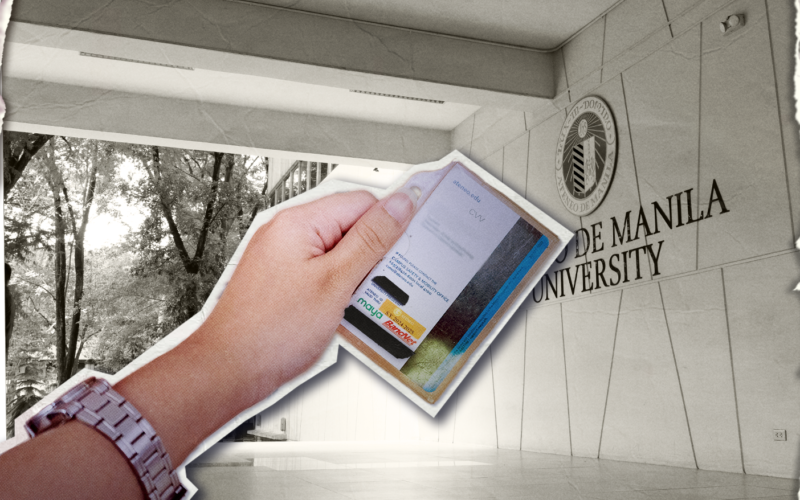Every meal at the cafeteria ends the same way: With a trip to the waste bin, as cafeteria customers dispose of any leftover food they have and return plates and utensils.
The amount of food each person throws away seems minimal on the surface. However, each waste container is gradually filled to the brim over time, to the point where each bin has to be replaced once the day ends. The problem of food loss is thus only recognized once the accumulated waste is seen.
Food waste is a multifaceted issue because it happens at all stages of the supply chain: production, processing, retailing, and consumption. In the context of the Ateneo, food waste is mainly tackled from the perspective of the retailers and consumers.
First glance
Environment and Development is one of the key strategic thrusts of the university, where the Ateneo Institute of Sustainability (AIS) is responsible for overseeing this agenda. This is done through the collection and analysis of raw data from each of the Loyola Schools (LS) campuses, which include the Ateneo Grade School (AGS) and High School, and coordinating with various offices to implement the proper measures. Food waste thus falls under the management of AIS, and is viewed as a university-wide issue.
Abigail Favis, Program Manager for Campus Sustainability, explains her approach towards this problem, saying, “We’re still trying to get baseline data, so we’ve had a series of food waste audits.”
These audits were conducted in specific cafeterias in each of the campuses. The data-gathering was done by separating leftovers into categories of rice, pasta and pastries, vegetables and fruits, and meat, as well as measuring the amount of food waste during certain hours.
For instance, the AGS main cafeteria was the location for the first audit back in 2013. The data-gathering was conducted during the students’ lunch time, and the problem of food waste was initially attributed to grade school students having access to unlimited rice.
“Per student in the grade school, that’s 33.5 grams [of food waste], which does not seem like a lot, but if you look at the national average, [it is] 20 [grams] per day,” explains Favis. Of the recorded data, almost half of the total amount consisted of leftover rice. Compared to the previous national average of 14 grams of rice waste a day, AGS students produced 16.5 grams, which amounts to 50.5 kilograms of wasted rice in just a week.
The whopping amount of wasted food troubled Favis, who considered having the option for unlimited rice removed from the grade school cafeteria. “It’s heartbreaking, the rice waste, [because] rice is 100% edible. When you look at vegetable waste, fruit waste, or meat waste, some of it is fat, it’s bones, things you really can’t eat.”
The next audit was conducted at the Gonzaga Hall cafeteria back in 2016. The data-gathering was conducted from 11:00 AM to 2:00 PM, which is the busiest time for the cafeteria. Initial results revealed that LS students threw away less rice compared to AGS students, but they produced a larger amount of food waste overall. “For the LS diners, it’s about 15.1 grams [of rice waste]. Compared to the grade school, we waste less rice, but we waste more vegetables, and we have more sources of starch,” affirms Favis.
Based on the audit, LS students on average wasted 21.6 grams of food, significantly less than the 33.5 grams of AGS students. Although this may be seen as a positive, the problem is more pressing for the former when the larger picture is taken into account, as the LS houses more than twice the population of AGS. Additionally, the data was only gathered during peak hours and only in one cafeteria.
While the difference in food waste may be due to the Gonzaga cafeteria not having the same option of unlimited rice, Favis is still unsure of the reasons behind this. “I don’t know if it’s because [LS students] are more mature, is it because we serve better food, is it because college students eat less? There are many questions that have yet to be answered.”
Provisions
Reducing the amount of food waste was the first measure taken by AIS following the aforementioned audits. For the AGS cafeteria, a compromise was reached regarding the option of unlimited rice. Before, a bowl of rice would be present at every table. Instead, now the students would have to go to the counter to ask for more rice.
For the Gonzaga Hall cafeteria on the other hand, Favis worked with the concessionaires in pushing for alternative portions for their meals. Amongst the options considered are half-rice, no-rice, no-side, and changing rice for sides.
Despite not having the chance to conduct follow-up audits, Favis believes that the implementation of these measures is a big first step in addressing the issue. “The feedback from administration was there’s very good impact on the amount of wasted food and a big impact also of the students. I don’t have the numbers to show you, but anecdotally, it worked.”
The next step in dealing with this problem is ensuring it does not cause further harm to the environment. Almost all of the food waste in the University is sold to piggeries, where it is sanitized and processed into animal feed. “That’s the most sustainable way to deal with [this issue],” says Favis, compared to having it decompose in landfill and causing more carbon emission.
Wasted food may also be turned into compost and used as fertilizer, as seen in the diverting of approximately 25 to 30 kilograms of food waste to the vermicomposting facility. However, this is merely done for the maintenance of the worms. “The food waste is an activator for the worms to digest all of the leaves, so we’re not looking to vermicomposting as an answer,” explains Favis.
It is not only the administration that has taken steps in trying to tackle this issue, as there have been student-led initiatives as well. One of these involves the thesis of Leslie Uy (BFA ID ’18), who coordinated with Environmental Science students to connect food waste to land footprint in the LS.
As her thesis required a design solution, Uy decided to make use of posters, tarpaulins, table tents, and a waste tub to increase awareness and exposure of the issue.
The goal of the posters was to inform students of the availability of alternative portions for their meals, and the reactions Uy received surprised her. “I was shocked that not a lot of people know about this, and that there are people who know but don’t avail of these because of reasons like ‘hindi sulit ang bayad’ (it’s not worth the cost).” Uy also revealed that some stalls do offer price cuts on certain portions, but this is the exception rather than the norm.
Uy set up the tarpaulins and table tents to present facts about food loss, but it was the waste tub that she felt had the largest impact on the students. The only food waste that is visible to the consumer is from their own plate, due to the fact that the containers are not see-through. This made the tub stand out as it was a representation of the waste she weighed from the original containers and this made the actual amount of leftover food visible to everyone passing by.
Eating habits
While the approach towards food loss is primarily the reduction of material waste, the behavioral aspect of consumers must also be examined. “Sometimes, we prioritize convenience, we prioritize instant gratification too much,” says Favis.
A prime example of this would be the passive consumption of AGS students when it came to their rice. Favis explains, “[before] boys just… get, because it’s right there. [Now] if you really want more, you have to stand up and go to the counter so there’s more thought involved in deciding whether I’m still going to get [more rice].”
With the knowledge that certain stalls offer price cuts as an incentive for students to avail of alternative portions, Uy suggested that all stalls should further build upon this and offer different serving sizes that better suit students’ appetites.
The quality of food being served is another factor being considered when looking at it from the consumers’ side. In line with this, Favis works closely with the with the LS-Ateneo Food Safety and Nutrition Advisory Council in campaigning for cafeterias to have healthier and more nutritious food.
While food waste also arises from an oversupply of cooked food, Favis dispels any concerns that the concessionaires further contribute to the problem and mentions that the stalls are “good at demand projection.”
Beyond the bin
Given that food loss is mainly viewed as a problem of material waste, it should be stated that it is an environmental issue and its implications are more far-reaching than students ordinarily comprehend.
The reason for this is that food waste is often examined from the perspective of the retailers and consumers, when it also happens at the level of production and processing. It is only when we look back at this stage of the supply chain where its impact on the environment can be measured.
Favis notes that approximately 3000 liters of water is used to grow 1 kilogram of rice. In addition to this, Uy states that 27 kilograms of carbon-dioxide is emitted for us to be able to eat 1 kilogram of meat. “It’s difficult for our minds to understand numbers in relation to ourselves. Which is why I think it is important to try to frame it in a more relatable way,” she says.
It is important to think of the social implications of food waste as well. Favis says, “I’m more worried about the social justice because our farmers are still the poorest people even though they produce the things that keep us alive. We don’t see them, so you don’t think about them.”
On the whole, the issue of food waste can only be minimized through the collective effort of the students. While the administration may implement measures such as offering alternative portions for meals, it is ultimately up to the students whether or not there is food left on the plate. “If this was just a technology intervention, [the] problem will be solved. It’s really how we change our lifestyles and that’s the hardest to change. So that’s what we really have to work with,” says Favis.







